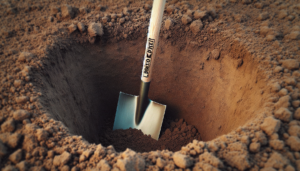
Navigating through unfamiliar terrain without the aid of a compass or GPS can be a daunting task, requiring an understanding of the fundamental principles of land navigation. In this article, we will explore the essential principles that can guide you in finding your way, relying solely on your own senses and observations. Discover how to navigate through nature’s labyrinth, honing your ability to interpret clues from the environment and tap into your inherent sense of direction. Embark on a journey of discovery as we unveil the secrets behind successful land navigation without the need for any technological assistance.
Understanding Land Navigation
Land navigation is a fundamental skill that is essential for outdoor enthusiasts, hikers, backpackers, and anyone venturing into remote areas. It involves the ability to navigate and orient oneself in unfamiliar terrain, relying solely on natural elements and basic tools. Whether you find yourself in the wilderness, on a hiking trail, or in a survival situation without access to a compass or GPS, understanding the principles of land navigation becomes crucial. In this article, we will explore the importance of land navigation, basic concepts, developing a mental map, natural navigation techniques, utilizing terrain features, orienting with a map and compass, estimating distance and time, route planning and navigation, navigating in challenging conditions, using dead reckoning, and various navigation tools and techniques.
Importance of Land Navigation
Land navigation is more than just a skill; it is an essential prerequisite for a safe and successful outdoor adventure. When venturing into unfamiliar terrain, relying on a compass or GPS alone can be unreliable and potentially dangerous. Batteries can die, technology can fail, or you could simply find yourself in a situation where you don’t have access to these modern tools. By understanding land navigation principles, you gain the ability to navigate effectively, maintain situational awareness, and find your way back to safety if necessary. It is a skill that fosters self-reliance, enhances your outdoor experience, and ensures your safety in any situation.
Basic Concepts of Land Navigation
Before delving into specific techniques, it is vital to familiarize yourself with the basic concepts of land navigation. This includes understanding map reading, compass orientation, and knowing how to interpret key terrain features. Topographic maps, which provide a detailed representation of the terrain, are an essential tool for land navigation. They showcase elevation, water features, vegetation, and other prominent landmarks. By studying these maps and grasping their symbols and contour lines, you can gain valuable insights into the terrain.
Compass orientation is another critical aspect of land navigation. A compass allows you to determine your direction, align the map correctly, and navigate precisely. Mastering the art of compass use is essential, as it empowers you to traverse unfamiliar territory with confidence. Finally, understanding terrain features is crucial for successful land navigation. Identifying major terrain features such as hills, valleys, ridges, and prominent landmarks aids in establishing your position and guiding your route.
Developing a Mental Map
Observation and Awareness
Developing a mental map starts with keen observation and heightened awareness of your surroundings. By using all of your senses, you can gather valuable information about the terrain, such as the sounds of running water, the feel of the wind, or the smell of certain vegetation. Engaging your senses allows you to create a mental image of the landscape and its features. Additionally, constantly observing your environment helps you detect any changes or landmarks that can be used for navigation purposes.
Identifying Landmarks
Landmarks play a crucial role in creating a mental map and navigating without a compass or GPS. Natural or man-made features, such as distinctive trees, rock formations, rivers, or buildings, serve as reference points that can guide you along your journey. By identifying and recalling landmarks, you can establish your position, measure distances, and ensure you stay on the correct path. It is essential to note that while natural landmarks may remain relatively unchanged, man-made landmarks can sometimes be altered or destroyed, so it’s important to have alternative reference points in mind.
Measuring Distance
A key element of land navigation without a compass or GPS is the ability to estimate and measure distances accurately. By using pacing and timing techniques, you can gauge distances approximately. Pacing involves counting your steps over a known distance and then applying that measurement to calculate distances on the move. Timing techniques, on the other hand, involve keeping track of the time it takes to cover a known distance, allowing you to estimate distances based on your walking speed. Both methods require practice and adjustment for variables such as terrain and fatigue.
Using Natural Navigation Techniques
Navigating by the Sun
The sun is one of the most reliable and accessible natural navigational tools. Understanding its daily movement can help you determine cardinal directions. In the Northern Hemisphere, the sun rises in the east, sets in the west, and is due south at noon. By noting the sun’s position throughout the day, you can maintain a general sense of direction, even without a compass. Shadows cast by objects can also be used to gauge direction, as they generally point opposite the direction of the sun.
Navigating by the Stars
If you find yourself navigating at night, the stars become invaluable for determining directions. By familiarizing yourself with specific constellations and star patterns, such as the North Star (Pole Star) in the Northern Hemisphere, you can establish true north and orient yourself accordingly. Learning to identify key stars and their positions relative to the horizon can significantly enhance your night-time navigation skills.
Navigating by the Moon
Similar to stars, the moon’s movement can also aid in land navigation. By observing the moon’s position relative to the horizon, you can gain a general sense of direction, particularly when it is near the eastern or western horizon. The moon’s crescent shape can also provide valuable information about its orientation, helping you determine east and west.
Navigating by Shadows
Shadows are reliable indicators of direction, especially when the sun is visible. By observing the direction and length of shadows, you can establish roughly east and west. Shadows cast by tall objects, such as trees or buildings, can provide a more accurate direction, as they are less influenced by minor changes in the sun’s position throughout the day.
Navigating by Wind Direction
Wind can serve as a subtle yet useful natural navigation tool. Wind tends to blow from certain directions based on local weather patterns, topography, and other factors. By paying attention to the wind’s direction and using it as a reference point, you can align yourself with a cardinal direction.
Utilizing Terrain Features
Identifying Major Terrain Features
Understanding major terrain features is vital for successful land navigation without a compass or GPS. It involves recognizing and utilizing prominent natural landmarks that help you stay on track. Major terrain features include mountains, valleys, ridges, hills, rivers, lakes, and other large-scale formations. By referencing these features on a map and comparing them with your surroundings, you can establish your relative position and navigate accordingly.
Using Minor Terrain Features
In addition to major terrain features, minor terrain features can provide valuable navigational clues. These include smaller, more subtle formations such as depressions, spurs, draws, and saddles. Minor terrain features can help you maintain your direction, avoid obstacles, and locate alternative paths. By observing the contours, vegetation, and other characteristics of the terrain, you can effectively navigate without the need for additional tools.
Understanding Contour Lines
Contour lines on topographic maps represent points of equal elevation, allowing you to visualize the three-dimensional nature of the landscape. By understanding contour lines and interpreting their patterns, you can gauge the steepness of slopes, identify valleys and ridges, and plan your route accordingly. The closer the contour lines, the steeper the terrain, while widely spaced lines indicate more gradual slopes. By utilizing contour lines, you can navigate around obstacles, estimate elevations, and traverse the terrain more efficiently.
Orienting with a Map and Compass
Understanding Topographic Maps
Topographic maps serve as indispensable tools for land navigation, providing a wealth of information about the terrain. They depict elevation, landforms, water features, and other essential details necessary for navigating without a compass or GPS. Familiarizing yourself with topographic map symbols, legend, and scale helps ensure accurate interpretation and effective route planning. A topographic map becomes a bridge between reality and your mental map, providing a visual representation of the landscape.
Determining Magnetic Declination
Magnetic declination refers to the angle between true north (the North Pole) and magnetic north (the direction a compass needle points). This angle varies according to your location on the Earth’s surface. To navigate accurately with a compass, it is crucial to determine the magnetic declination for your specific area. This information can be found on topographic maps, a GPS, or through online resources. By adjusting for the magnetic declination, you can ensure that your compass readings align with true north, enhancing the accuracy of your navigation.
Using a Compass for Orientation
A compass is an invaluable tool for orienting yourself and establishing directions without a compass or GPS. By using a compass in conjunction with a topographic map, you can accurately determine your current position and navigate to your desired destination. To use a compass effectively, hold it level and parallel to the ground, ensuring the magnetic needle aligns with the compass’s housing. By following the compass’s cardinal directions, you can travel in the intended direction, adjust your bearings, and navigate challenging terrains confidently.
Estimating Distance and Time
Pacing and Timing Techniques
Estimating distance and time is a critical skill for land navigation without a compass or GPS. Pacing and timing techniques provide reliable methods to gauge distances and estimate how long it will take to reach a specific location. Pacing involves counting the number of steps you take to cover a known distance accurately. By establishing your average pace and multiplying it by the number of steps, you can estimate the distance you have traveled. Timing techniques, such as using predetermined time intervals to cover a particular distance, can also help in estimating both distance and time.
Using Natural Markers for Distance Estimation
Natural markers, such as trees, rocks, or distinct vegetation, can aid in estimating distances during land navigation. By aligning markers along your route and keeping track of their respective distances, you can create a mental grid that allows you to gauge how far you have traveled. Additionally, using pacing and timing techniques in conjunction with natural markers provides additional confirmation and accuracy to your distance estimation.
Route Planning and Navigation
Planning a Route
Route planning is a crucial step in land navigation, helping you avoid obstacles, manage time, and reach your destination efficiently. When planning a route without a compass or GPS, it is essential to consider natural features, such as rivers, mountains, and valleys, that can either assist or hinder your progress. By studying topographic maps, identifying key landmarks and terrain features, and selecting the most viable paths, you can plan a route that maximizes efficiency and minimizes risks.
Understanding Bearings
Bearings are specific angles measured from a reference point (usually north) to a target or destination. Understanding bearings allows you to establish the direction and navigate accurately without a compass or GPS. To determine a bearing, you can use objects in your environment, natural features, or celestial cues. By mentally aligning yourself with your targeted bearing, you can maintain your direction and stay on track.
Using Handrails and Attack Points
Handrails and attack points are vital concepts in land navigation, allowing you to navigate with greater accuracy and efficiency. Handrails are linear features that serve as a guide, such as trails, rivers, or ridges, which can help keep you on the correct path. Attack points, on the other hand, serve as intermediate targets that can be easily identified and marked on your mental map. By navigating to these points, you can refine your position and establish a more precise direction to your final destination.
Navigating in Challenging Conditions
Navigating at Night
Navigating at night presents its own set of challenges, with reduced visibility and potential disorientation. However, with the right techniques and preparedness, you can confidently navigate without a compass or GPS. Relying on celestial cues such as stars, the moon, and even artificial lights in the distance can help guide your direction. Being well-acquainted with the terrain and landmarks before nightfall is essential in order to accurately navigate and avoid unnecessary risks.
Navigating in Forested Areas
Forested areas can be disorienting, with limited visibility and a dense canopy that obstructs natural cues. To navigate effectively without a compass or GPS in forested areas, rely on specific techniques such as maintaining a sense of direction through mental mapping, following ridges or watercourses, and paying close attention to natural sounds or signs of disturbance that may indicate human activity or trails.
Navigating in Deserts
Deserts pose a unique set of challenges for land navigation due to their vast and uniform landscapes, lack of distinct landmarks, and scorching temperatures. Successfully navigating without a compass or GPS in deserts requires a combination of techniques, including observing the sun’s position and shadows, monitoring wind patterns, identifying subtle changes in terrain, and using sand dunes or rock formations as reference points.
Navigating in Snow or Ice
Navigating in snowy or icy terrain without a compass or GPS demands vigilance and adaptation to the harsh environment. Key techniques include utilizing natural landmarks, such as mountain peaks or distinctive features above the snow line, tracking wind patterns and identifying their effects on snow distribution, and using the sun’s position and shadows to maintain direction. Additionally, it is crucial to monitor weather conditions and understand potential hazards, such as avalanches or hidden crevasses.
Using Dead Reckoning
Understanding Dead Reckoning
Dead reckoning is a technique that involves continuously calculating and adjusting your position based on your last known location, direction, and distance traveled. While not as precise as using a compass or GPS, dead reckoning can provide a reliable method for land navigation without these tools. By tracking your footsteps, estimating distances, and maintaining a general awareness of the terrain, you can confidently navigate and make informed decisions about your direction and route.
Using Landmarks and Direction to Navigate
When utilizing dead reckoning, landmarks and direction become critical points of reference. By identifying prominent landmarks and aligning yourself with your intended direction of travel, you can follow a specific bearing and maintain your course. Continuously updating and cross-referencing with both mental and physical landmarks allows you to confidently navigate and stay on track.
Navigation Tools and Techniques
Using a Watch and Sun Dial
A watch serves as a multifunctional tool for land navigation without a compass or GPS. By using your watch as a makeshift sun dial, you can determine approximate cardinal directions. To do this, point the hour hand towards the sun and bisect the angle formed by the hour hand and the number 12 on the watch’s face. The bisected angle will roughly point south in the Northern Hemisphere. This technique is most accurate during daylight hours when the sun is visible.
Using a Shadow Stick
A shadow stick is a simple but effective tool for determining cardinal directions based on the sun’s position. Placing a straight stick vertically in the ground and marking the tip of the shadow it casts at a specific time (such as every 15 minutes) allows you to determine your east-west line. Firstly, mark the initial position of the shadow. Then, after a predetermined time, mark the new shadow position. By connecting these marks with a straight line, you can determine east and west, with the first mark being west and the second mark being east.
Using a Pole Star
In the Northern Hemisphere, the Pole Star, also known as Polaris or the North Star, serves as a reliable celestial navigational tool. Located roughly aligned with the Earth’s North Pole, the Pole Star remains nearly stationary while other stars and constellations appear to revolve around it. By locating the Pole Star and extending a line directly below it, you can identify true north. This technique requires clear skies and familiarity with the night sky.
In conclusion, understanding the principles of land navigation without a compass or GPS is a fundamental skill for any outdoor enthusiast. By developing a mental map, utilizing natural navigation techniques, leveraging terrain features, orienting with a map and compass, estimating distance and time, planning routes, navigating in challenging conditions, utilizing dead reckoning, and employing various navigation tools and techniques, you can confidently explore unfamiliar terrains and navigate with precision. Remember, practice, observation, and awareness are key to mastering land navigation, ensuring your safety, and enhancing your outdoor experiences.





